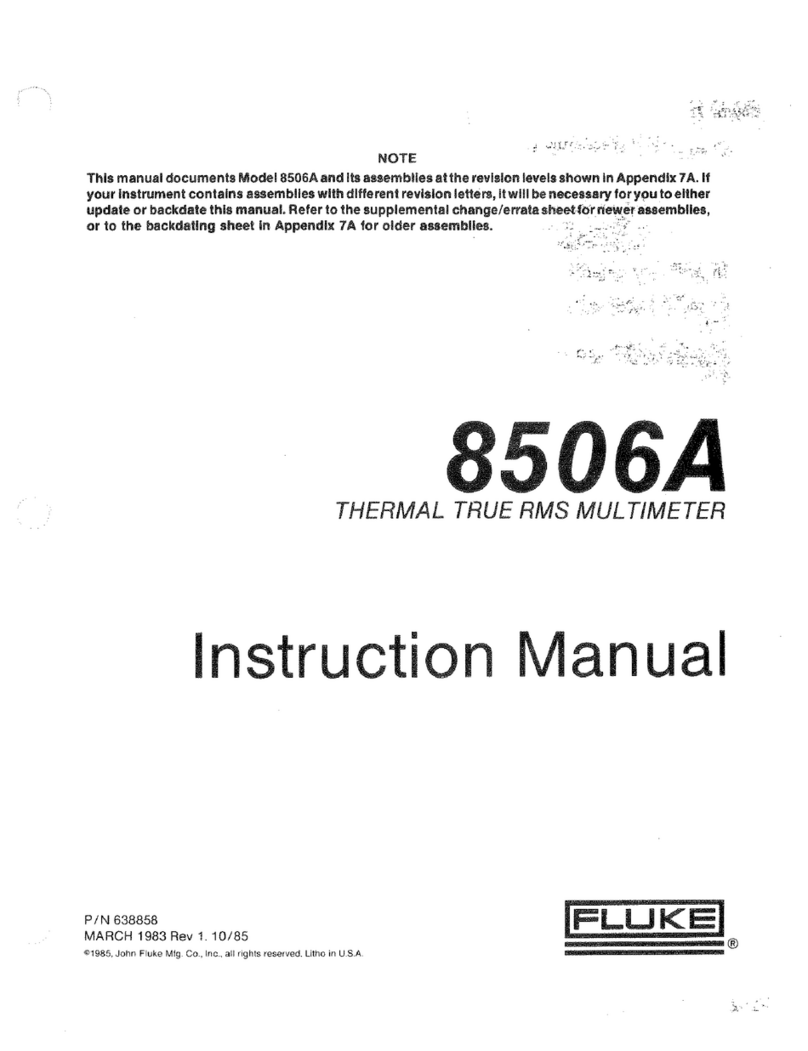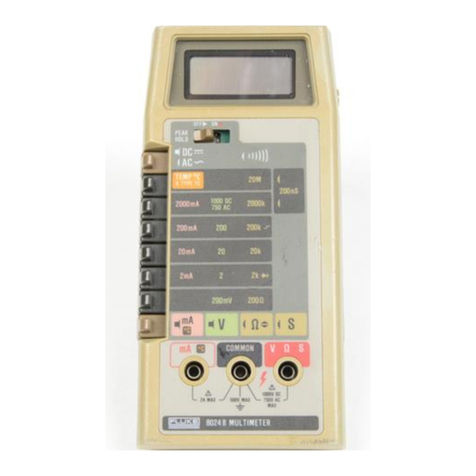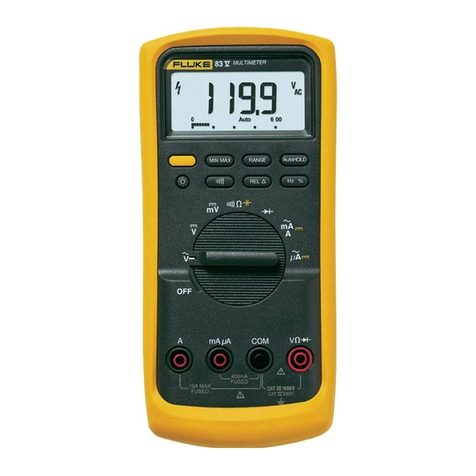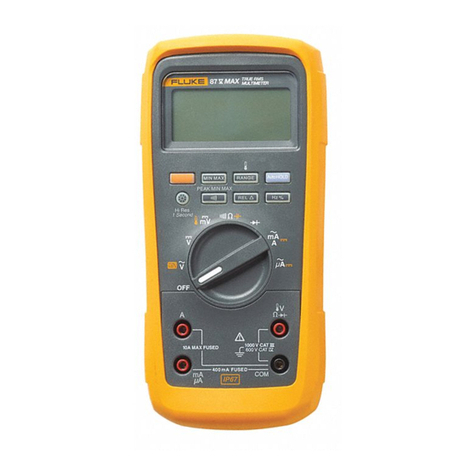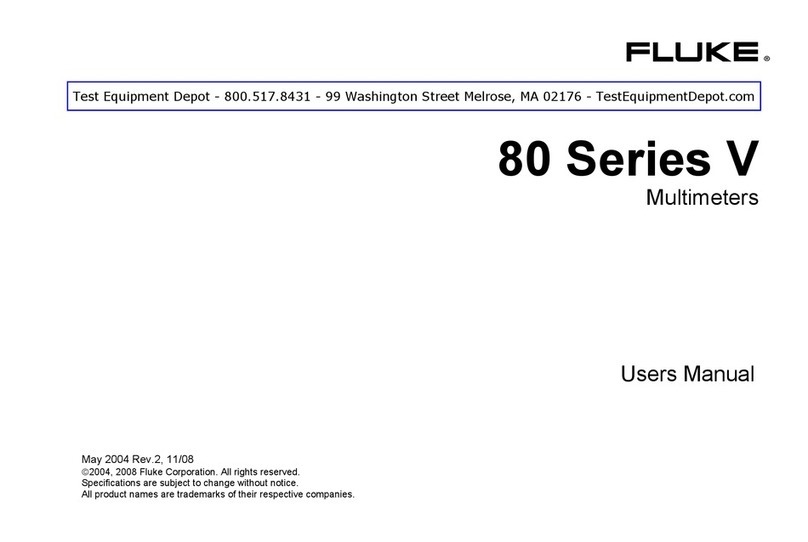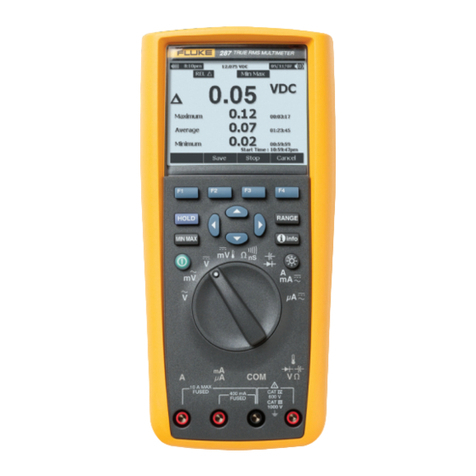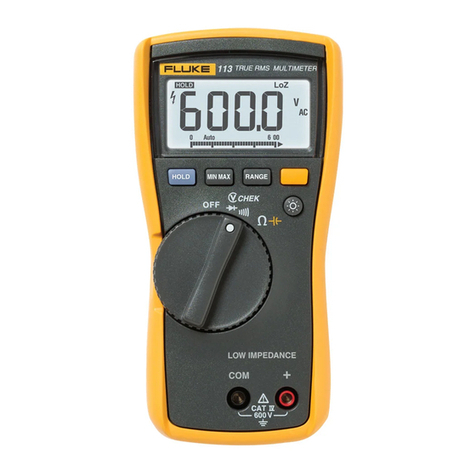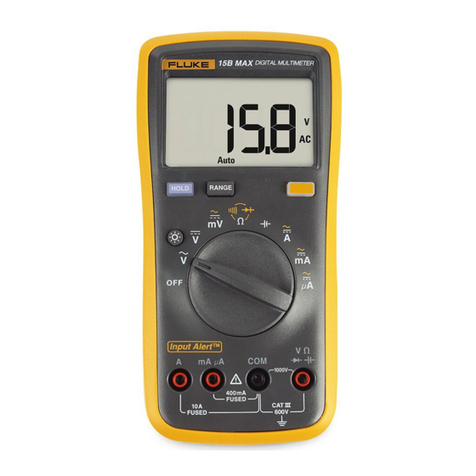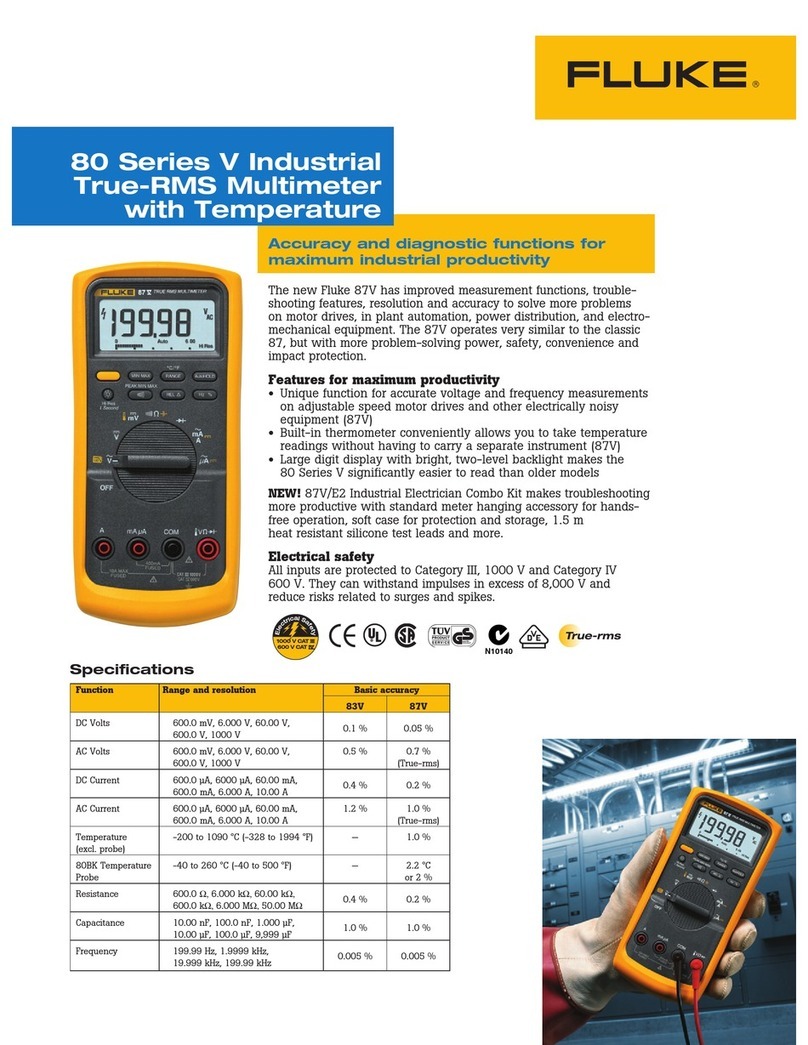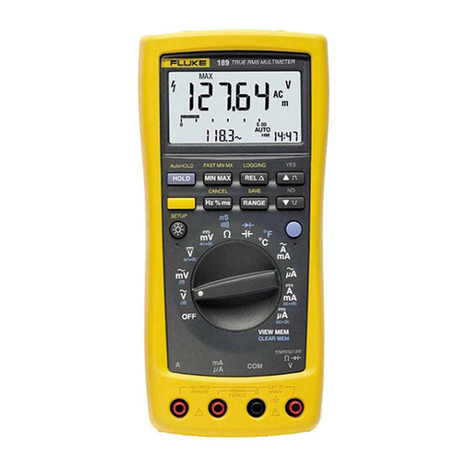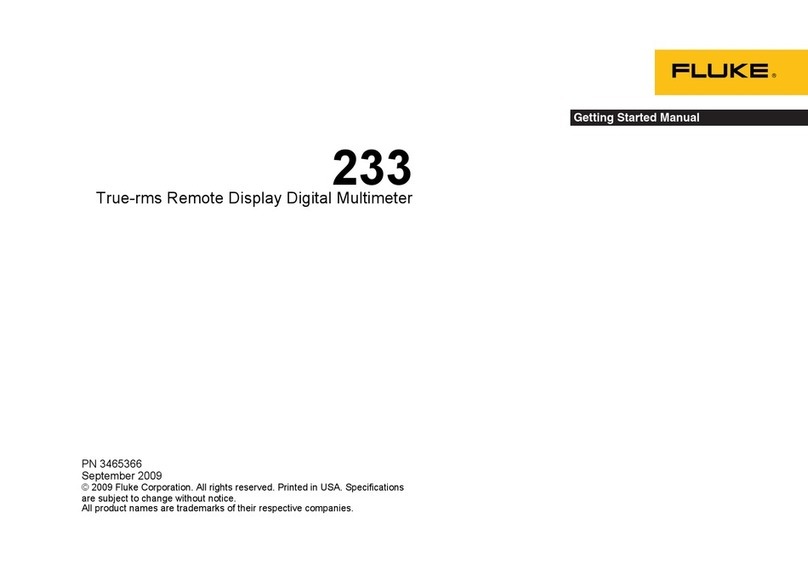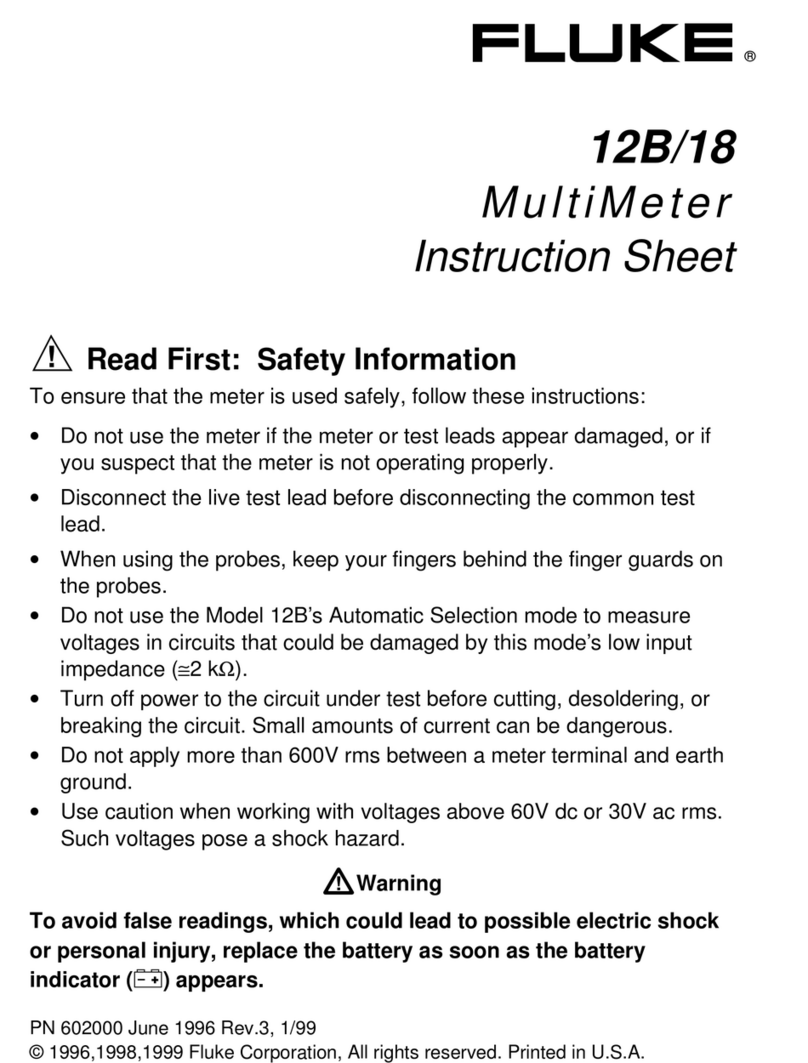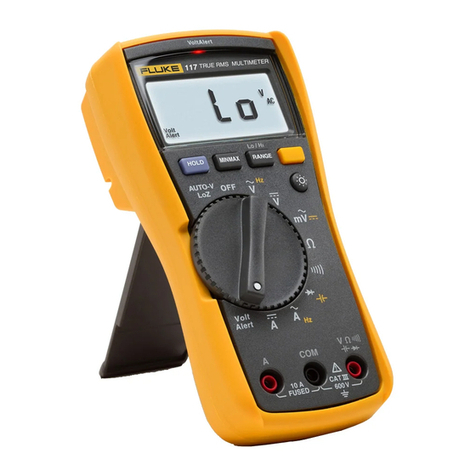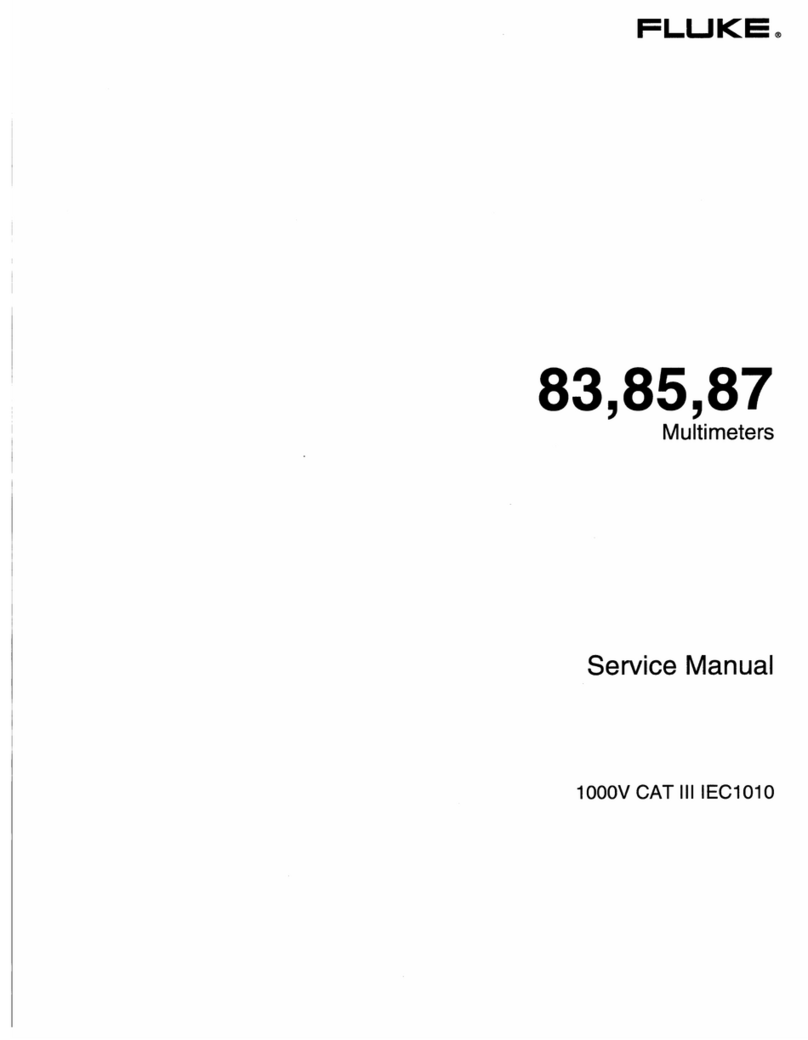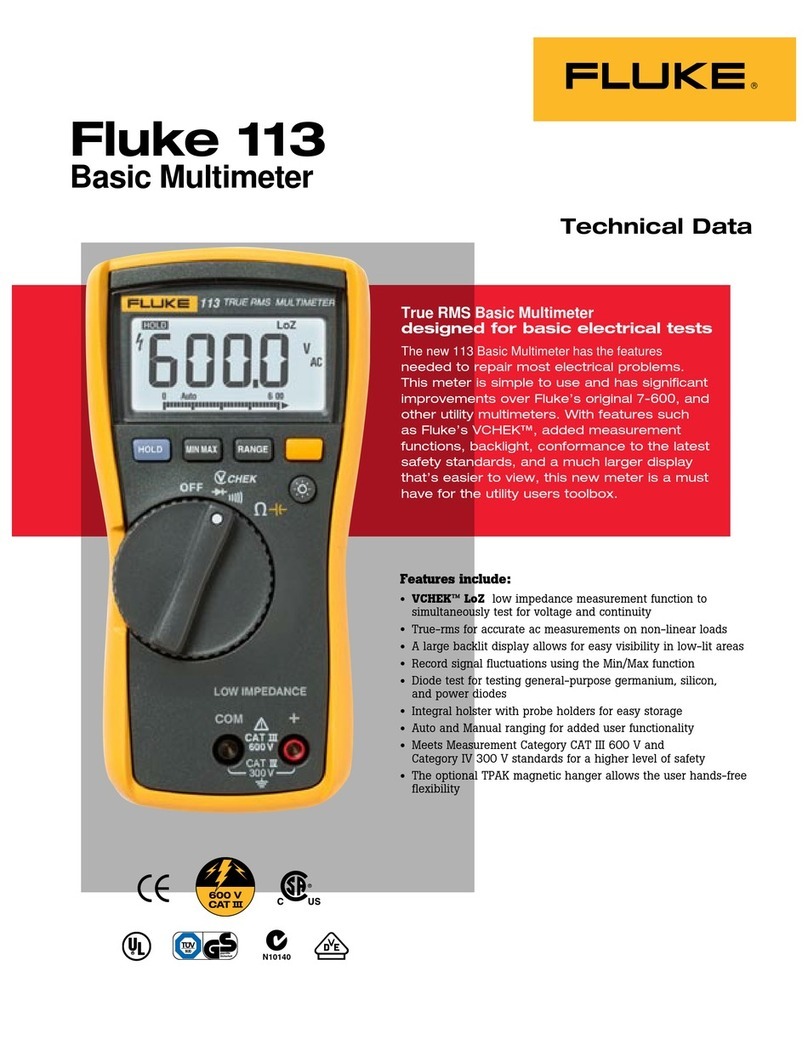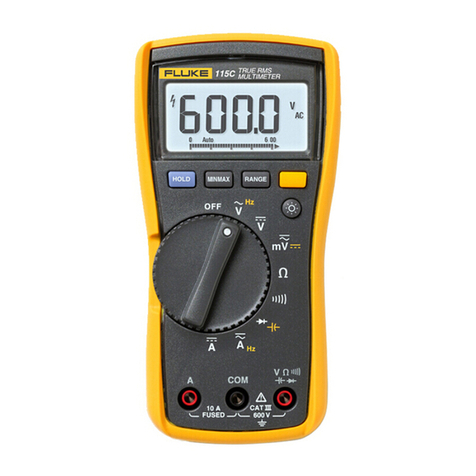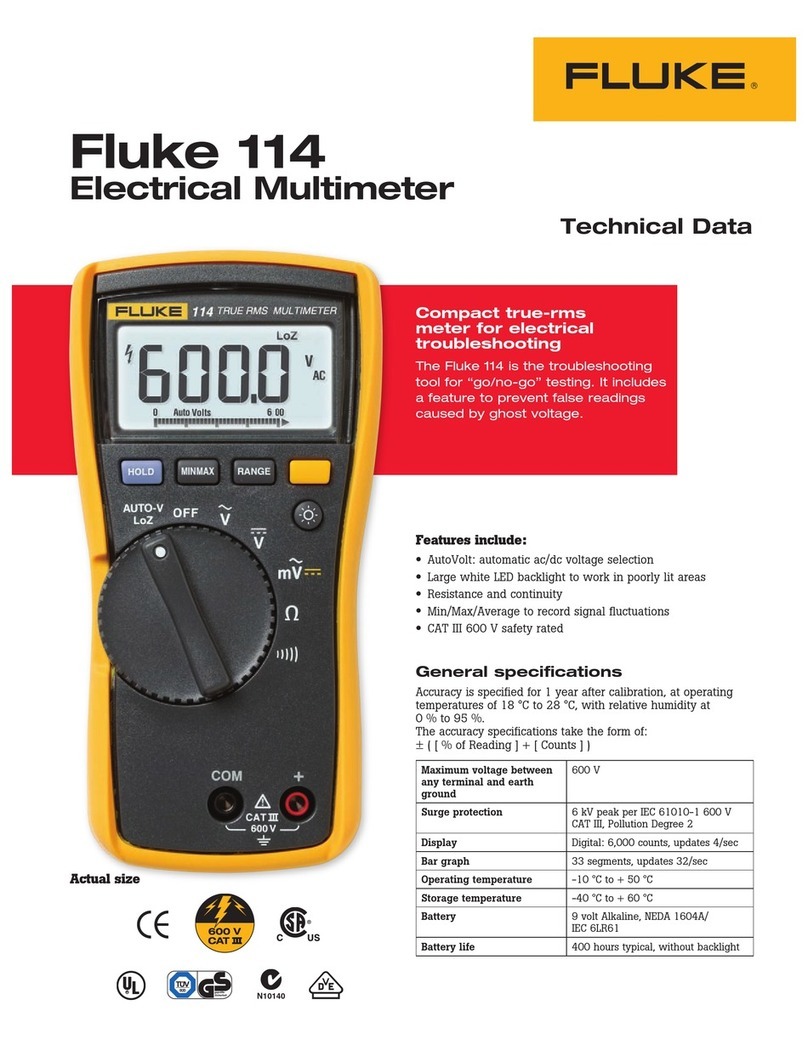
True-rms Remote Display Digital Multimeter
International Electrical Symbols
3
WCaution
To prevent damage to the Meter or to the equipment under test, follow these
guidelines:
•Disconnect circuit power and discharge all high-voltage capacitors before you do diode
tests or measure resistance, continuity, or capacitance.
•Use the correct terminals, function, and range for all measurements.
•Before a current measurement, do the fuse test.
International Electrical Symbols
Table 1 lists the international symbols that appear in this document and on the Meter.
Table 1. Electrical Symbols
BAC (Alternating Current) JEarth ground
FDC (Direct Current) IFuse
XHazardous voltage PConforms to European Union directives.
WRisk of Danger. Important information.
See Manual. )Conforms to relevant Canadian Standards Association
directives.
Battery. Low battery when shown. TDouble insulated
RContinuity test or continuity beeper tone. ECapacitance
CAT
III
IEC Measurement Category III
CAT III equipment has protection against
transients in equipment in fixed-
equipment installations, such as
distribution panels, feeders and short
branch circuits, and lighting systems in
large buildings.
CAT
IV
IEC Measurement Category IV
CAT IV equipment has protection against transients
from the primary supply level, such as an electricity
meter or an overhead or underground utility service.
~Do not discard this product as unsorted
municipal waste. Go to the Fluke website
for recycling data.
ODiode
®Examined and licensed by TÜV Product
Services. ;Conforms to relevant Australian standards.
General Specifications
Maximum voltage between any
terminal and earth ground ........................................... 1000 V rms
WFuse for A inputs ..................................................... 11 A, 1000 V 17000A interrupt rating Fuse
Display ........................................................................... 6000 counts, updates 4/sec (Frequency: 9,999 counts, Capacitance: 1,000 counts)
Altitude
Operating.................................................................... 2,000 meters
Storage ....................................................................... 12,000 meters
Temperature
Operating.................................................................... -10 °C to +50 °C
Storage ....................................................................... -40 °C to +60 °C
Temperature coefficient ............................................... 0.1 X (specified accuracy) / °C (< 18 °C or > 28 °C)
Electromagnetic Compatibility (EN 61326-1:2006) .... In an RF field of 3 V/m, accuracy = specified accuracy except in temperature: specified
accuracy ±5 °C (9 °F)
Wireless Frequency...................................................... 2.4 GHz ISM Band 10 meter range

